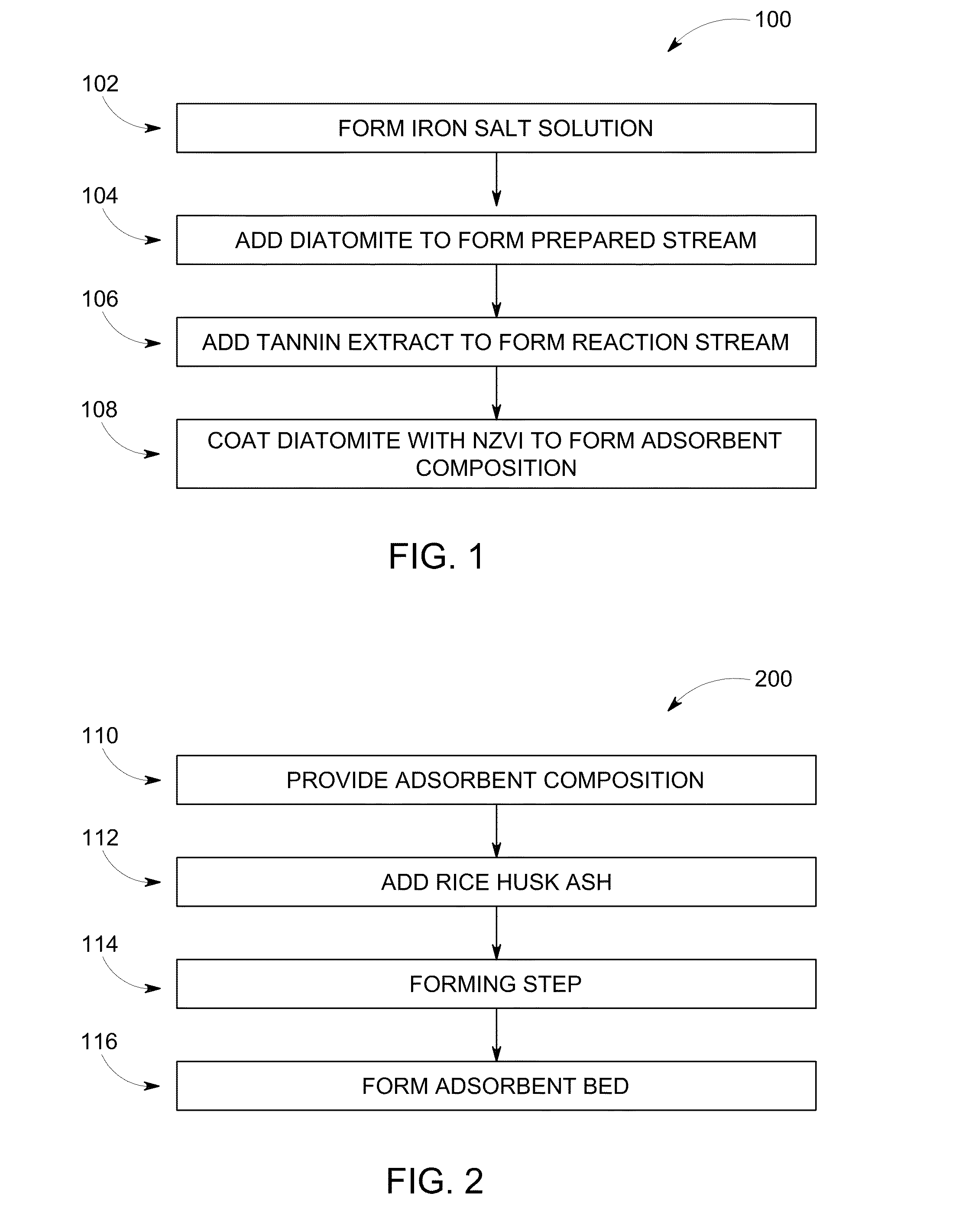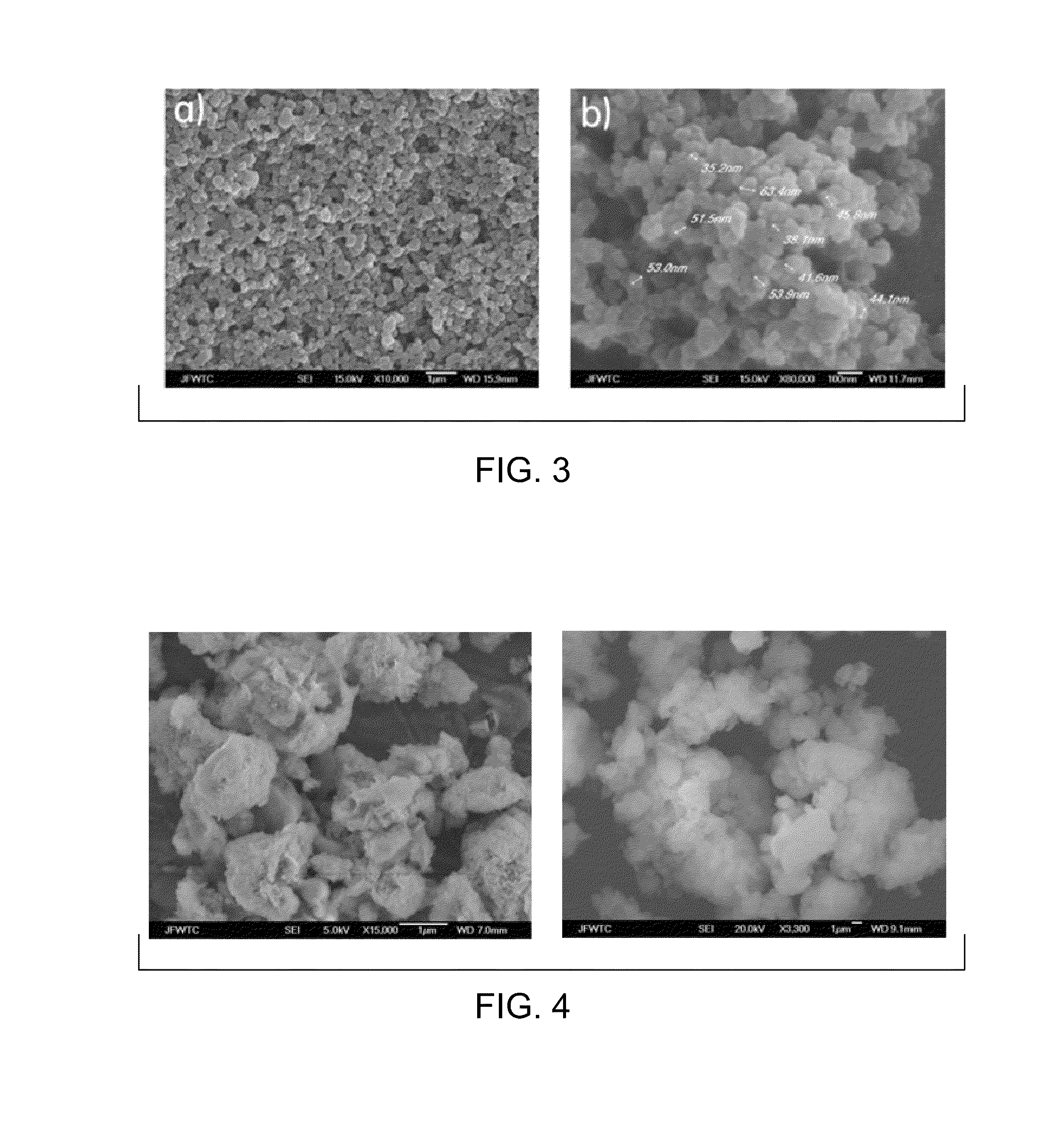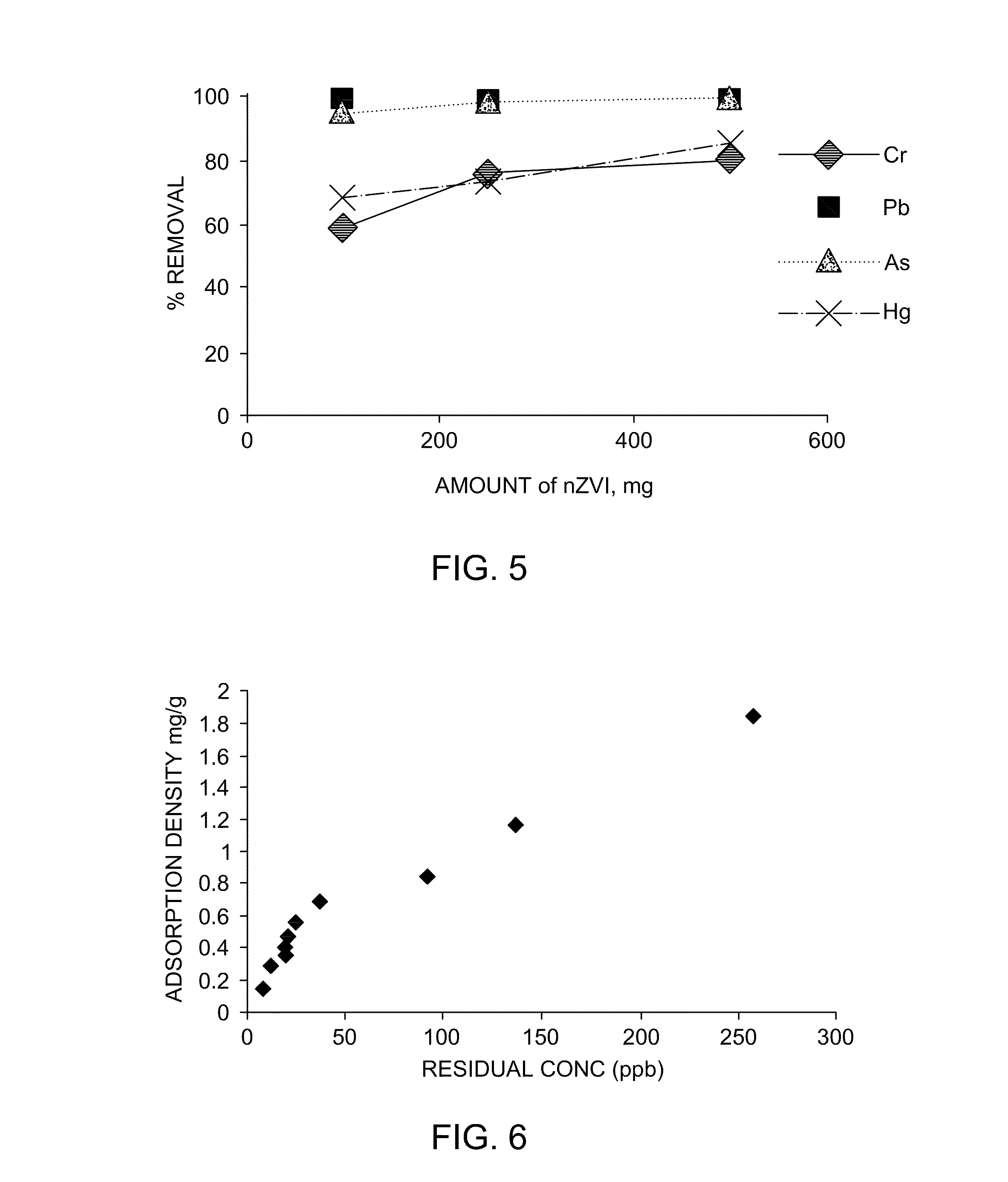Adsorbent composition by a green process and a process for toxic metal ion removal
a technology of toxic metal ion removal and adsorbent composition, which is applied in the direction of other chemical processes, separation processes, waste water treatment from quaries, etc., can solve the problems of heavy metal contamination in industrial and mining wastewater, high cost, and high risk of heavy metal removal, so as to reduce heavy metals and be less complex
- Summary
- Abstract
- Description
- Claims
- Application Information
AI Technical Summary
Benefits of technology
Problems solved by technology
Method used
Image
Examples
examples
Comparison of Calcined Diatomite with Raw Diatomite
[0035]For the calcined diatomite, Celite® with an average particle diameter of 68 microns was used. The surface area of calcined diatomite was measured using the BET method. The method comprised measuring the adsorption of N2 gas on the surface of the diatomite at a constant pressure (relative pressure (P / P0)≈0.2). The same BET measurements were repeated using raw diatomite as the adsorbant. Raw diatomite particles less than about 37 microns were used. Pore size and pore volume for both calcined and raw diatomite were also measured using the BJH method. The results of the tests are shown in Table 1 below.
TABLE 1Calcined DiatomiteBET / BJH Measurement(Celite ®)Raw DiatomiteSurface Area (m2 / g)1.489876.5986Cumulative Pore Volume (m3 / g)0.0021680.289559Average Pore Diameter (A)89.6104150.6062
Preparing In Situ NZVI-Coated Raw Diatomite and Adsorption Efficacy
[0036]For the examples, tannin extract was used to synthesize nanoparticles of zero...
PUM
| Property | Measurement | Unit |
|---|---|---|
| particle size distribution | aaaaa | aaaaa |
| particle diameter | aaaaa | aaaaa |
| particle size | aaaaa | aaaaa |
Abstract
Description
Claims
Application Information
 Login to View More
Login to View More - R&D
- Intellectual Property
- Life Sciences
- Materials
- Tech Scout
- Unparalleled Data Quality
- Higher Quality Content
- 60% Fewer Hallucinations
Browse by: Latest US Patents, China's latest patents, Technical Efficacy Thesaurus, Application Domain, Technology Topic, Popular Technical Reports.
© 2025 PatSnap. All rights reserved.Legal|Privacy policy|Modern Slavery Act Transparency Statement|Sitemap|About US| Contact US: help@patsnap.com



